WTB Vulpine S TCS Gravel Tyre review - turbo charge your gravel racing (in the right conditions)
The WTB Vulpine S TCS Gravel Tyre is unashamedly aimed at riders who value speed above all else; mudpluggers need not apply

A specific tool for a job, the WTB Vulpine S gives gravel racers and dry trail riders a very fast-rolling tyre. Ridden with consideration towards its limitations, it provides a surprising amount of grip in wider circumstances than you might imagine, but once its performance parameters are reached, the drop-off is quite steep.
-
+
Fast-rolling
-
+
Good comfort/air volume
-
+
Great air retention
-
+
Easy tubeless set up
-
-
Traction and grip has limits
-
-
Not a year-round tyre for most of us
-
-
Requires a bit of confidence
You can trust Cycling Weekly.
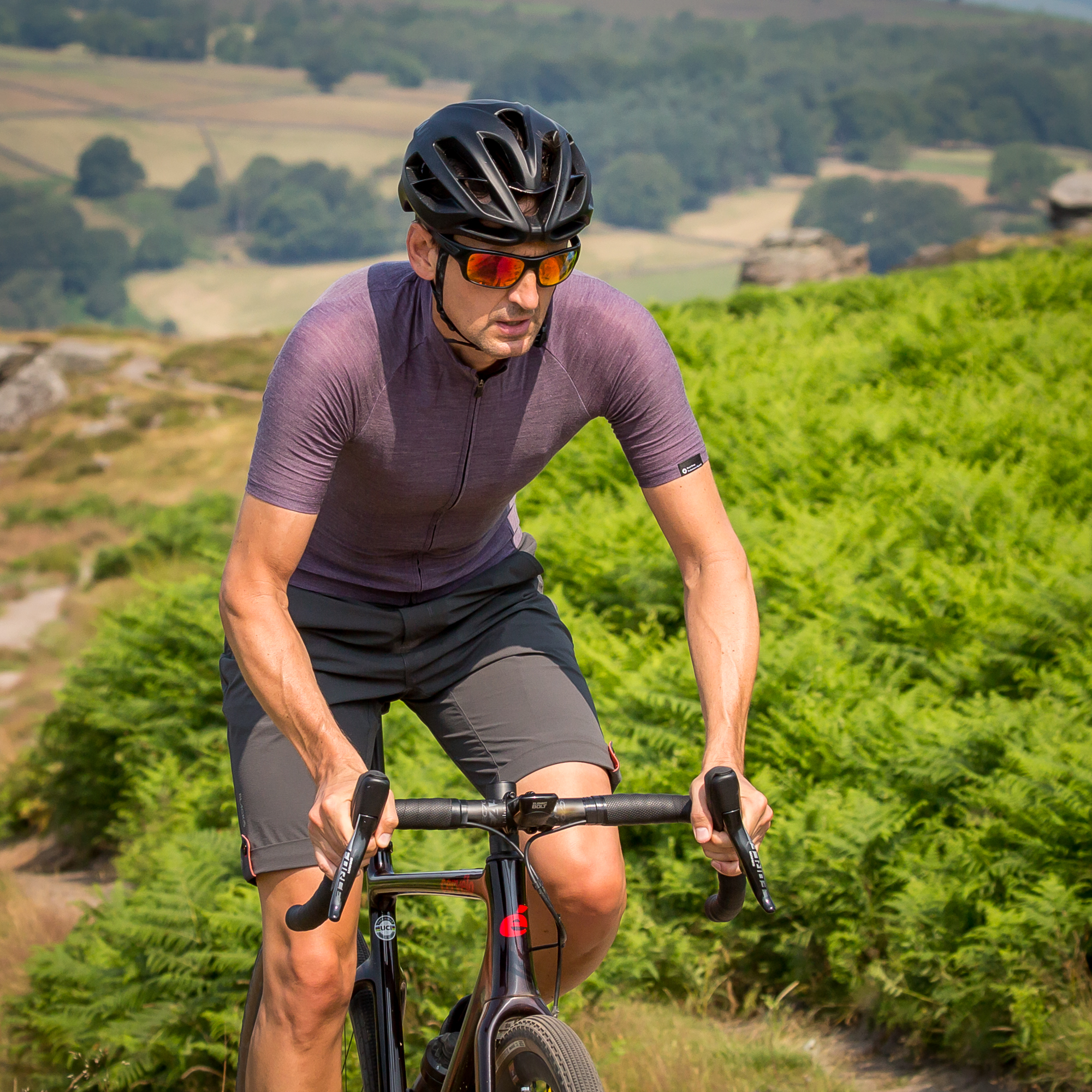
If you are lucky enough to live and ride somewhere that enjoys hard-packed, dry trails and finely gravelled tracks, then the latest gravel tyre from WTB is for you.
The S version of the Vulpine is WTB’s fastest gravel tyre, substituting the lightly chevroned centre line of the original for a fully slick ridge. It’s aimed at gravel racers who value speed and low rolling resistance above all else, and definitely isn’t a general, all-round kind of option.
It’s available in 700c x 40mm and 45mm widths and comes with either black or tan sidewalls. Anyone choosing this type of tyre is unlikely to be using 650b wheels, I guess.
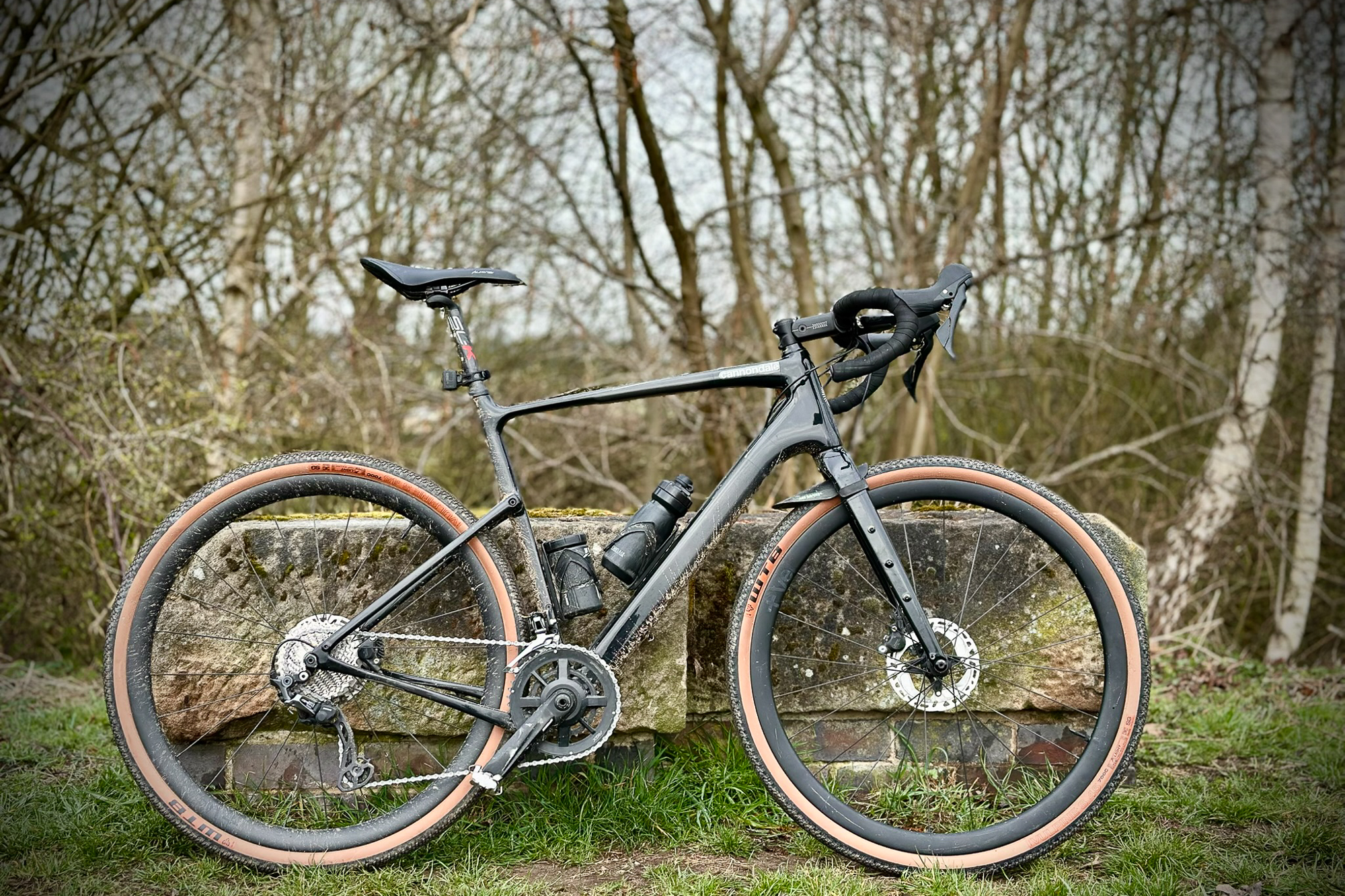
The Vulpine S is available with black or tan sidewalls
Construction
With a full name that includes more letters than a postman’s sack, the WTB Vulpine S 45 x 700 TCS Light/Fast Rolling 120tpi Dual DNA SG tyre proudly wears its tech on its sleeve. Its defining feature is the fully slick centre line, differentiating it from the standard Vulpine, which has a central ridge with tread. The shoulders of both tyres are identical, with a rounded profile that has larger lugs on the edge with smaller knobs next to the centre line.

The lugs increase in size away from the centre line
The idea with the Vulpine S is to provide the least rolling resistance possible when going in a straight line while still providing grip when cornering. As WTB says, it is a ‘race-focused’ tyre.
As for the initialisms: TCS stands for ‘tubeless compatible system’, ‘Light/Fast Rolling’ denotes the tyre’s level within the range (although all their gravel tyres are this level), 120tpi is the thread count, with higher numbers indicating a more supple ride, ‘Dual DNA’ is the rubber compound that combines durable and grippy areas and finally, ‘SG’ indicates that it has puncture protection in the sidewalls.
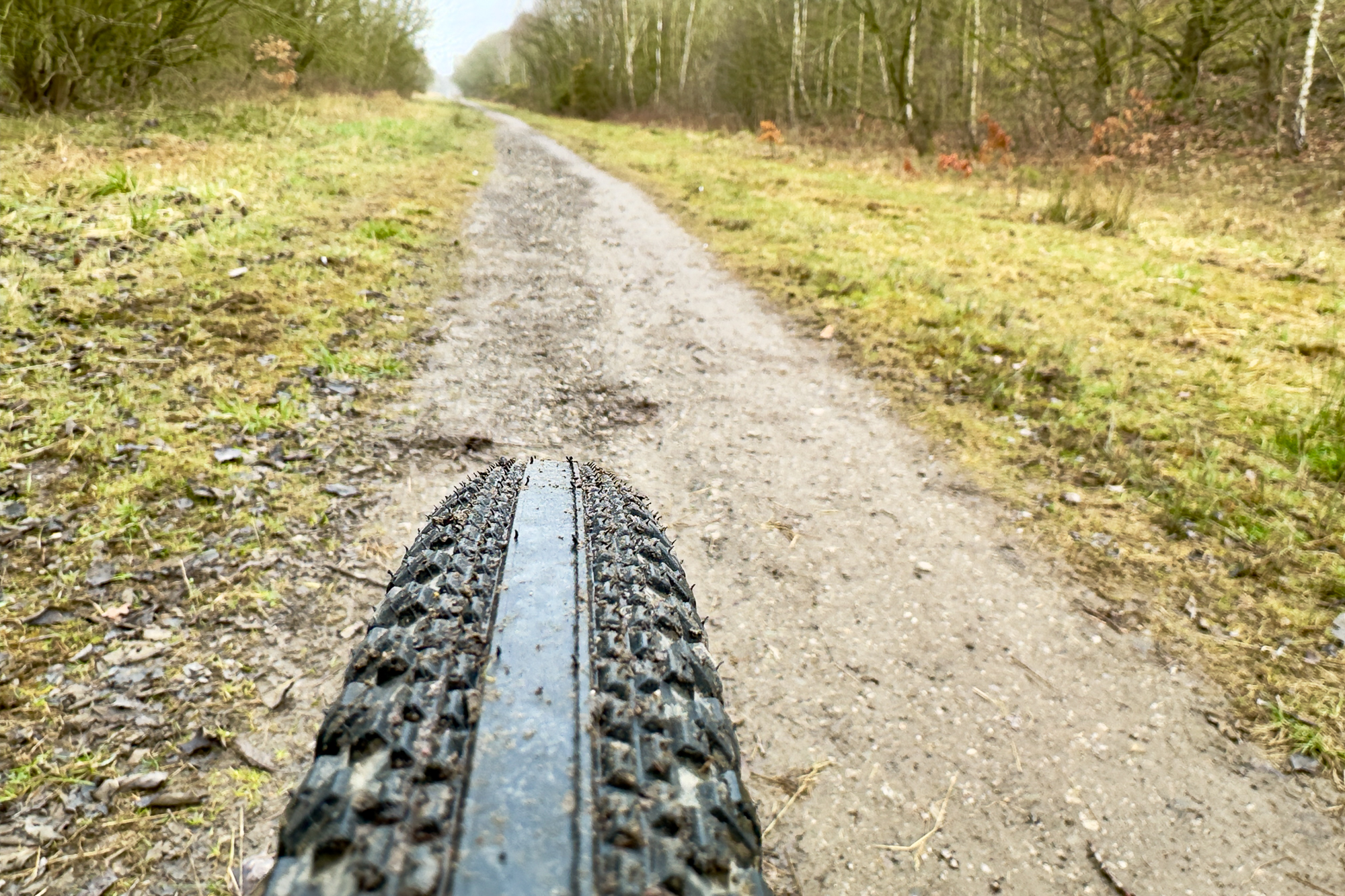
WTB claims that a 700 x 45c Vulpine S with tan sidewalls weighs 560g, and the two I tested sat on the scales at 560g and 567g, so pretty darn close to spec.
The ride
As often seems to be the way with gravel tyres as opposed to tubeless road tyres, installation and inflation on my carbon wheels was very easy, and air retention (using WTB sealant) was also nigh on perfect right from the start. The inflated width was bang on the stated 45mm.
I have to confess, I did wait a few weeks after putting the tyres on for the trails to dry out a bit—there is no doubt that the Vulpine S and mud would not be the cosiest of bedfellows, and nor are they intended to be. However, once the wind and occasional burst of sunshine had done their job and dried out the Peak District, I went out on some regular loops.
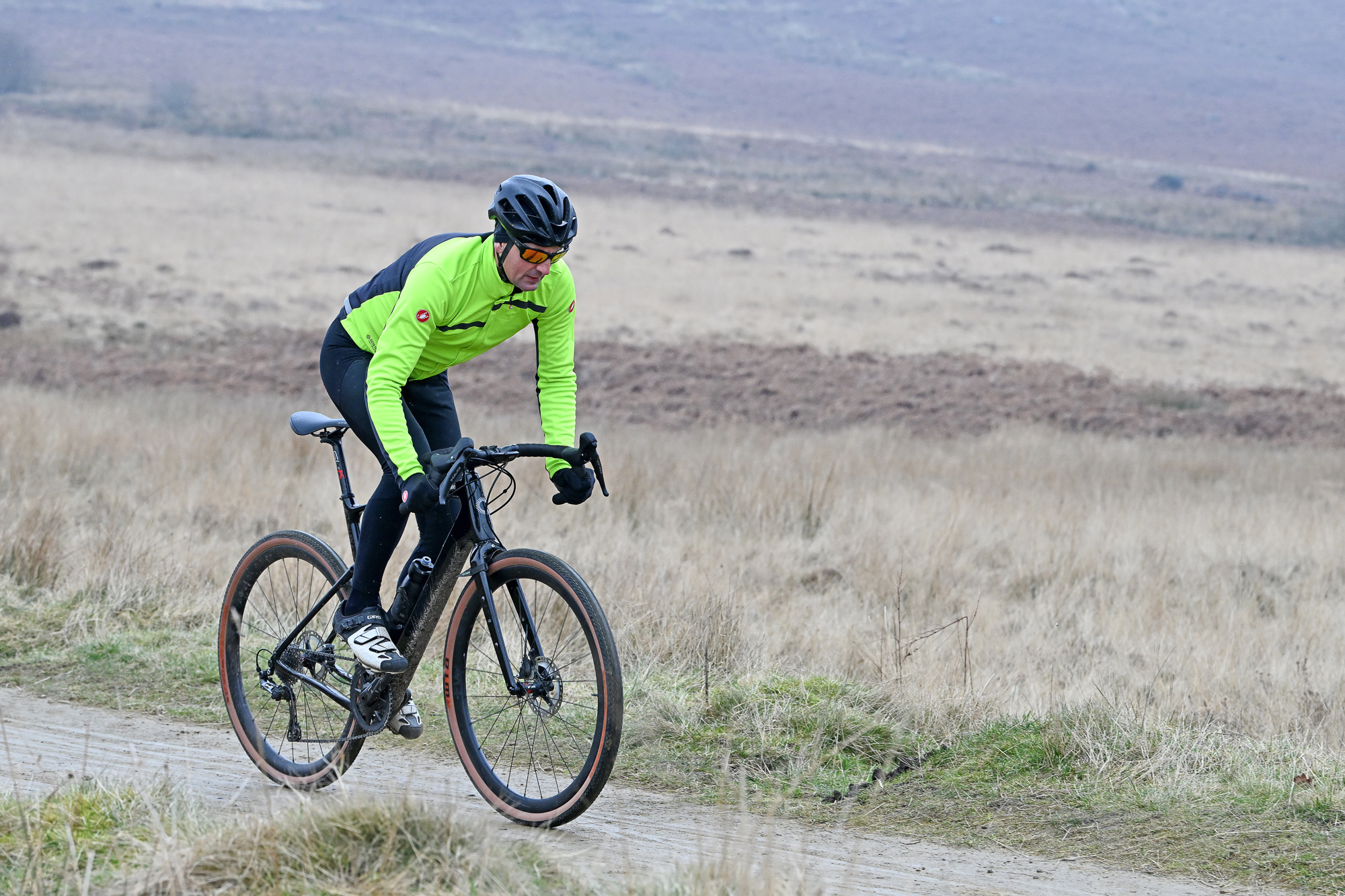
Damp trails required a bit of care
Sections of road and smooth trails were despatched quickly and efficiently, without the characteristic buzz that usually accompanies knobbly tyres on that sort of terrain. Rougher tracks were also fine, as long as they were dry or rocky, with the fairly large-volume tyres doing a good job of providing comfortable passage.
On steeper or muddier ground, I was always aware that there was a finite amount of traction available, and so I tried to ride with measured inputs so as not to overwhelm the tread. It was a similar story with braking - it was quite tricky to modulate stopping power as just a fraction too much pull resulted in the tyre losing grip and sliding. I was understandably cautious when using the front brake!
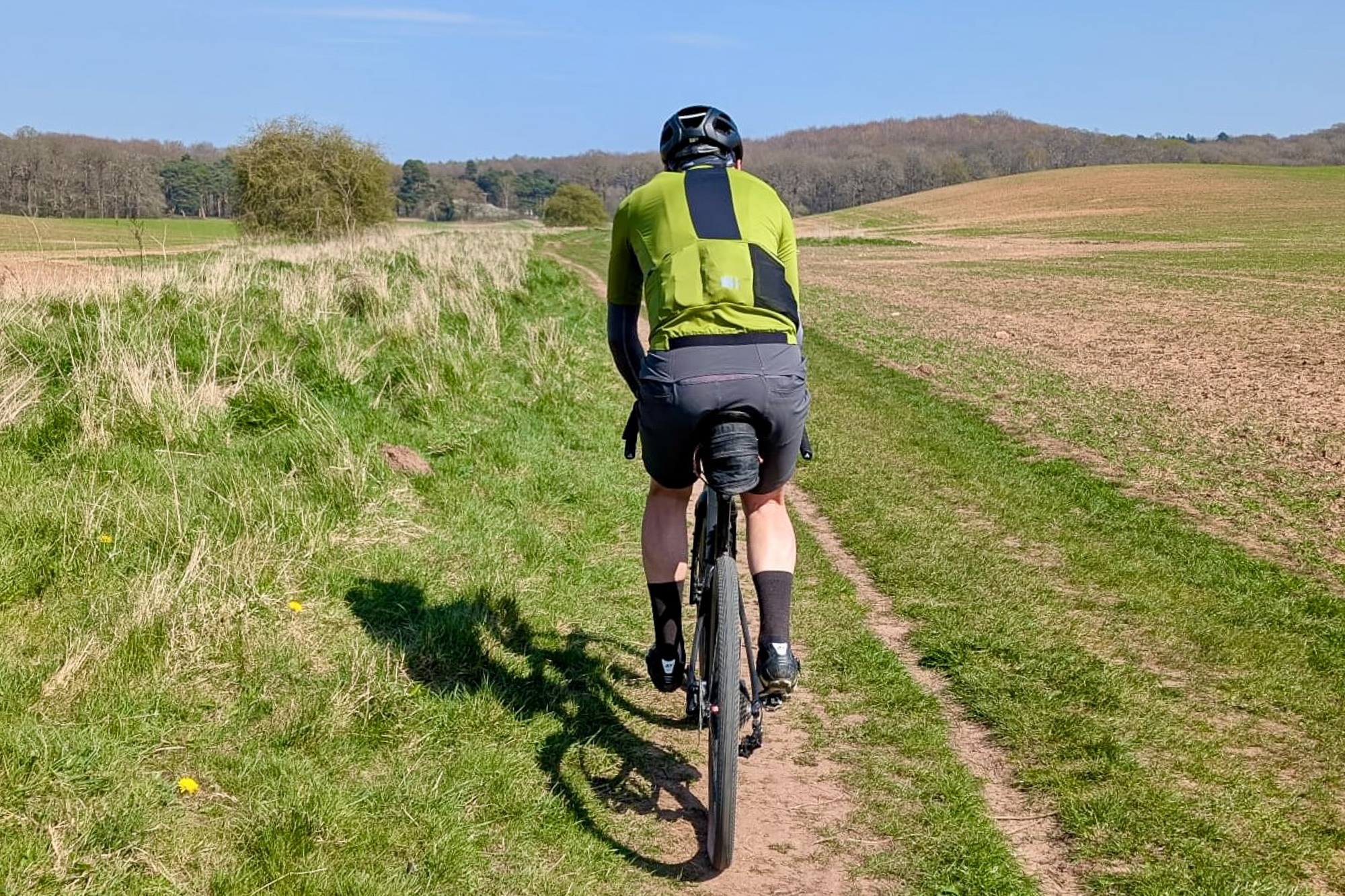
On bone dry trails the Vulpine S was fast and smooth
I didn’t suffer any issues cornering, on or off-road, but again, I was suitably respectful of the tyre’s design brief and didn’t try any extreme lean angles. To be fair, the shoulder lugs are a similar size to those found on many other gravel tyres, so once engaged there should be some grip but it is still a little disconcerting barrelling towards a bend only to glance down and see what looks like a rather smoother tyre, thanks to the slick centre line.
None of these comments are meant as criticisms. WTB clearly aims the Vulpine S at gravel racers, who could be expected to have a decent level of skill and who should understand the tyre’s benefits and limitations. I enjoyed my rides on the Vulpine S; it was great not to feel (and hear) energy being sucked away by big lugs, but where I ride in the Dark Peak is quite sandy and drains quickly with nice, grippy gritstone trails. I don’t think I’d have had such a good time in the White Peak, for instance, with slippery limestone and claggy soil.
Value and Conclusion
Tyre choice for off-road riding is nearly always a compromise. A balance between durability, weight, grip and rolling resistance. The WTB Vulpine S clearly sits at the less grip, more speed end of the gravel tyre spectrum and should be judged as such.
These are not year-round, multi-purpose fit-and-forget tyres. If you ride somewhere suitable and/or are prepared to swap tyres or wheels as appropriate to the conditions, then the Vulpine S will shine in the right circumstances, providing a rewarding return on any effort put in.
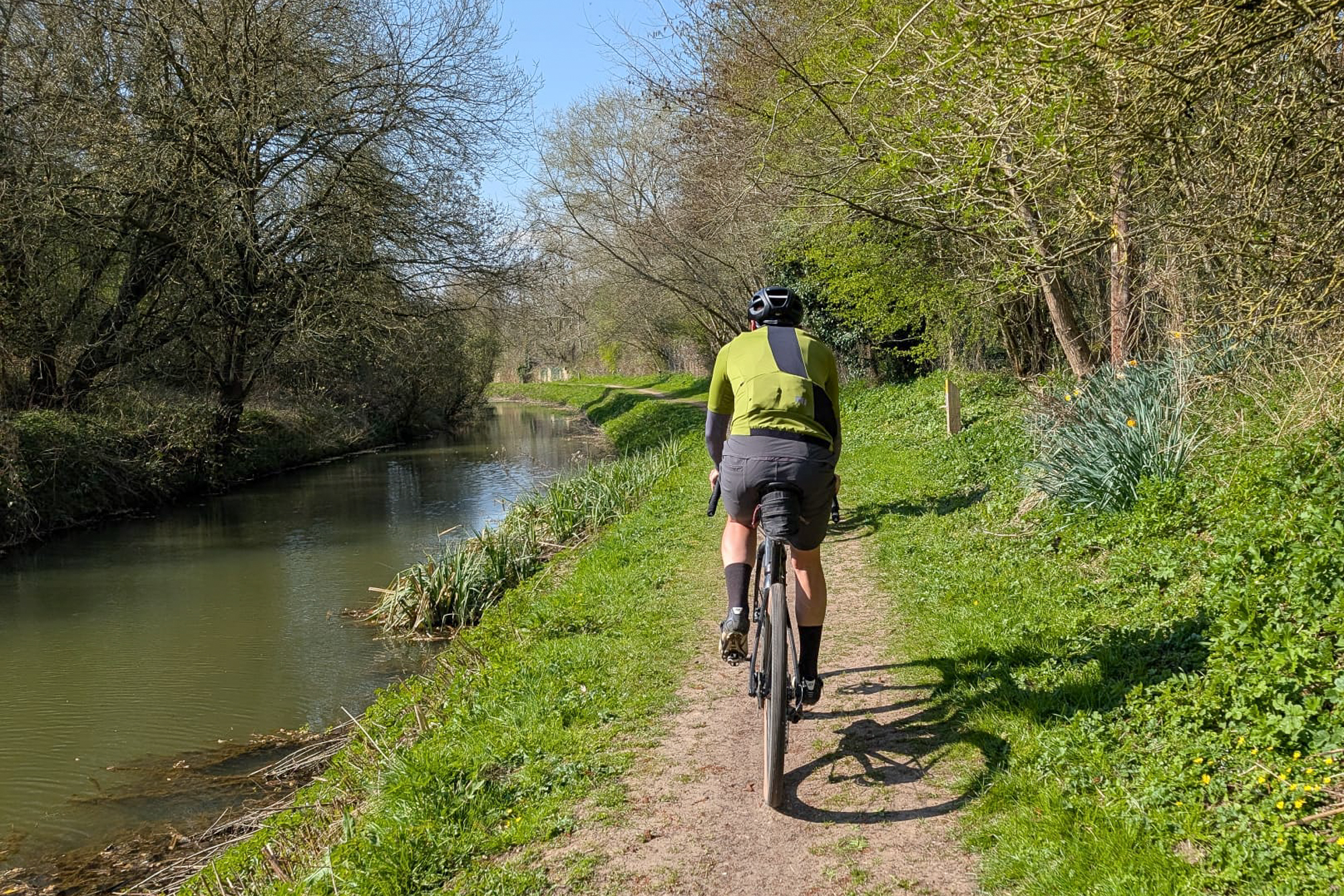
Perfect Vulpine S terrain
It costs £65, which is neither cheap nor expensive for a decent, tubeless gravel tyre. Value rather depends on how much use you are likely to get out of a dry weather tyre, but if you are prepared to accept its limitations, then the Vulpine S is reasonable value given its performance and feature set.

Thank you for reading 20 articles this month* Join now for unlimited access
Enjoy your first month for just £1 / $1 / €1
*Read 5 free articles per month without a subscription

Join now for unlimited access
Try first month for just £1 / $1 / €1
Get The Leadout Newsletter
The latest race content, interviews, features, reviews and expert buying guides, direct to your inbox!
Tim Russon is a writer and photographer who has worked in the outdoor and cycling industry for over 20 years. He can’t remember a time when he didn’t own a bike and has road, gravel, mountain and retro bikes in the shed. His favourite place to ride is the Dolomites, a simply stunning area which has breathtaking views and incredible roads combined with lovely food and great wine.
He prefers long, hot climbs in the big mountains, but as he lives on the edge of the Peak District he has to make do with short, cold climbs most of the time instead.
You must confirm your public display name before commenting
Please logout and then login again, you will then be prompted to enter your display name.
-
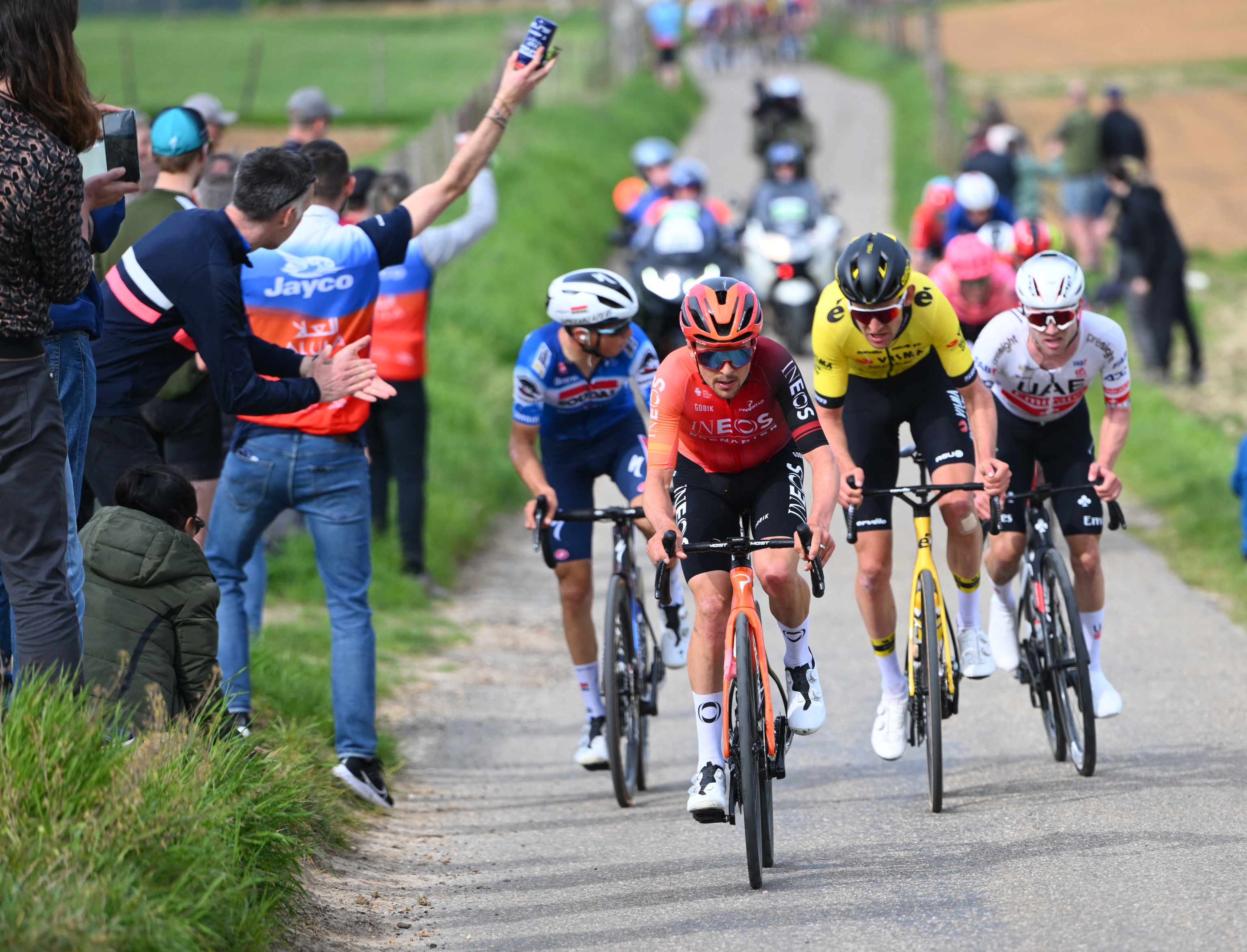 How to watch the Amstel Gold Race 2025: Everything you need to live stream the Dutch Classic
How to watch the Amstel Gold Race 2025: Everything you need to live stream the Dutch ClassicAll the broadcast information for the first of the Ardennes Classics on 20 April with Tom Pidcock – here's how to watch Amstel Gold Race online and on TV.
By Adam Becket Published
-
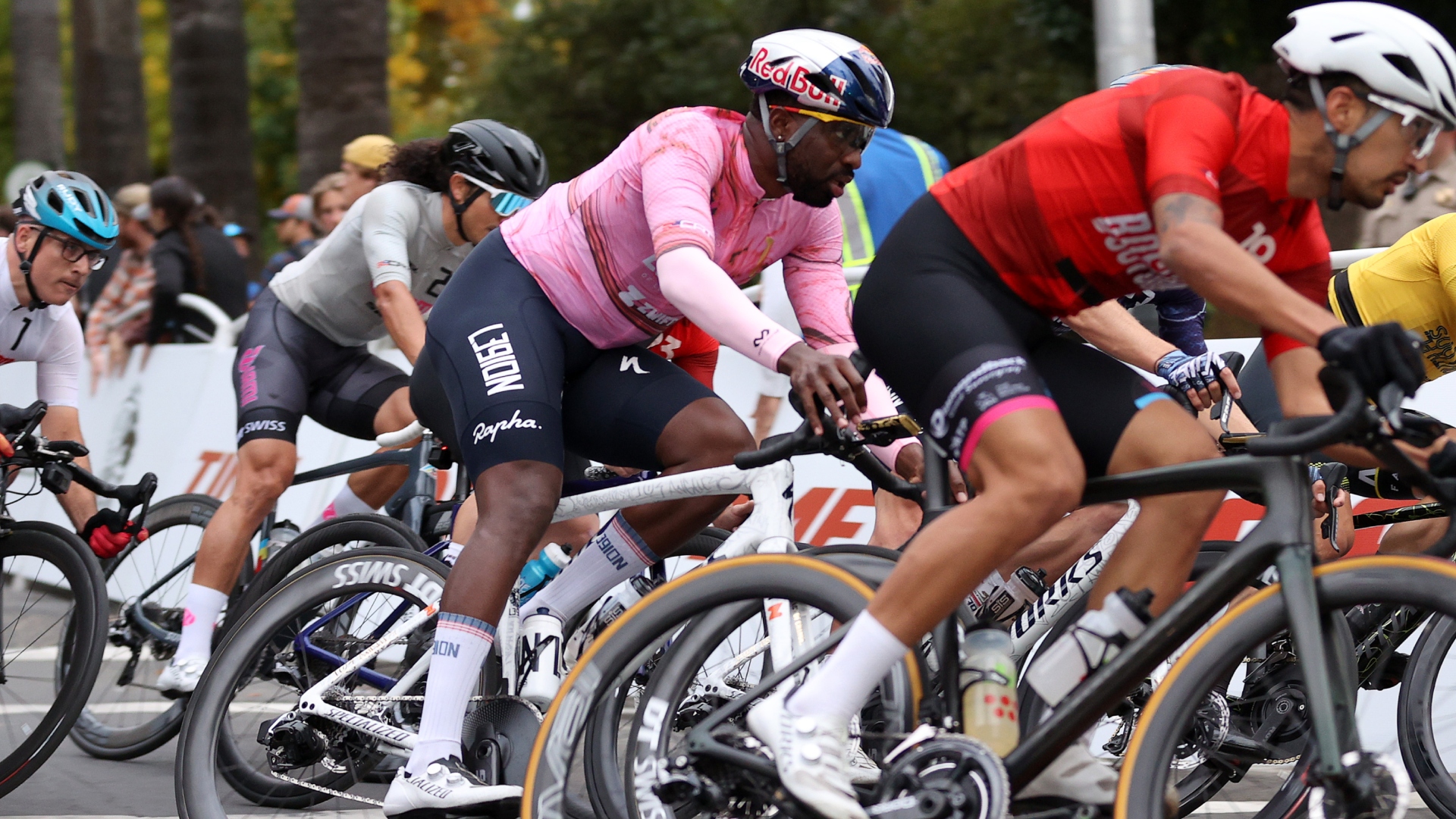 Can you make a living as an American domestic road racer? A look inside the part-time professionalism of the American road peloton
Can you make a living as an American domestic road racer? A look inside the part-time professionalism of the American road pelotonAfter decades of booms and busts, the American road scene finds itself in a fragile place. We spoke to riders to understand the reality of chasing the dream on home soil
By Logan Jones-Wilkins Published
-
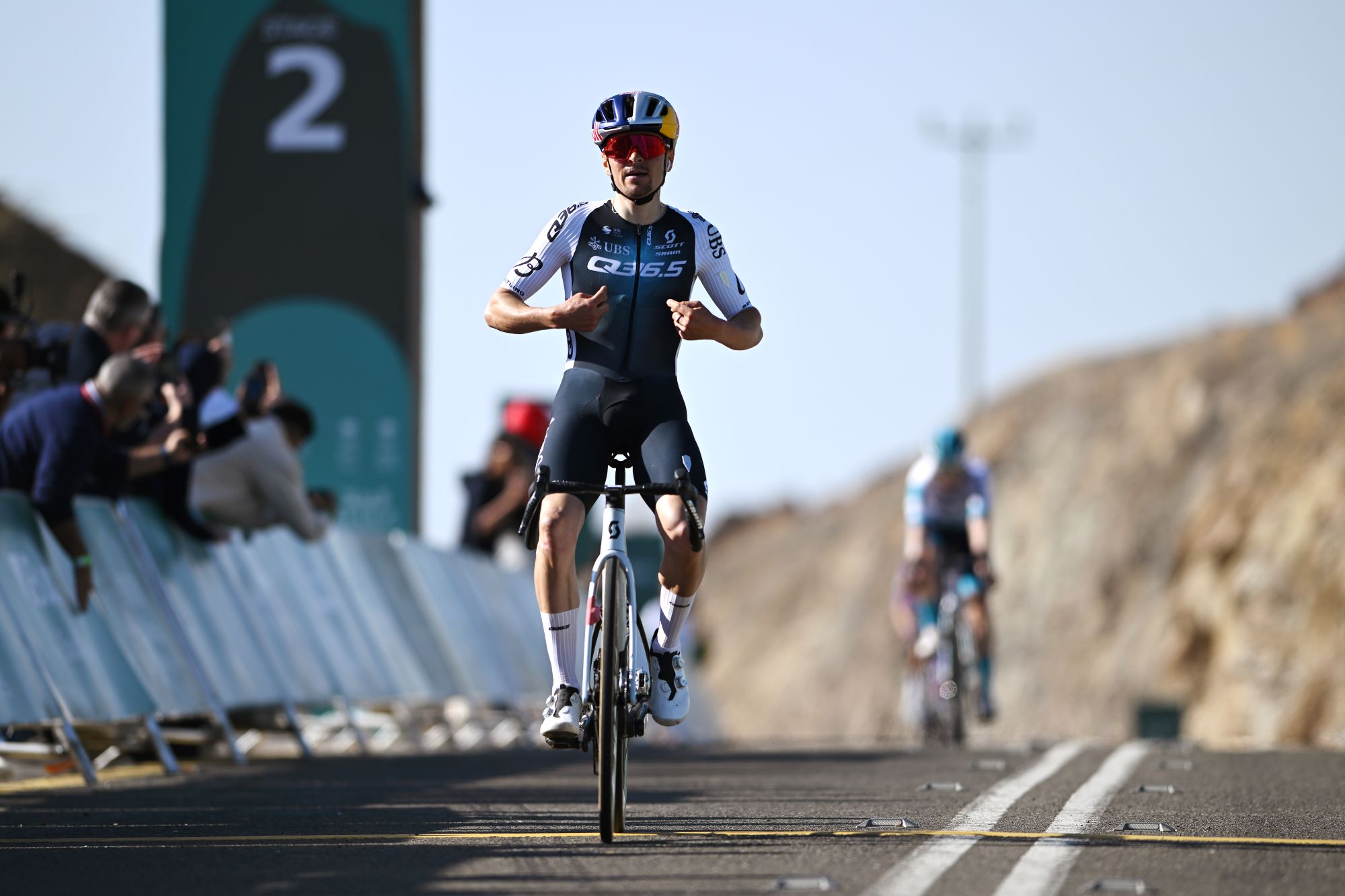 What does Q36.5 mean? We asked the people behind the Italian kit brand that sponsors Tom Pidcock's team
What does Q36.5 mean? We asked the people behind the Italian kit brand that sponsors Tom Pidcock's teamQ36.5's Luigi Bergamo and Lodovico Pignatti Morano take on Cycling Weekly's Q&A
By Tom Thewlis Published